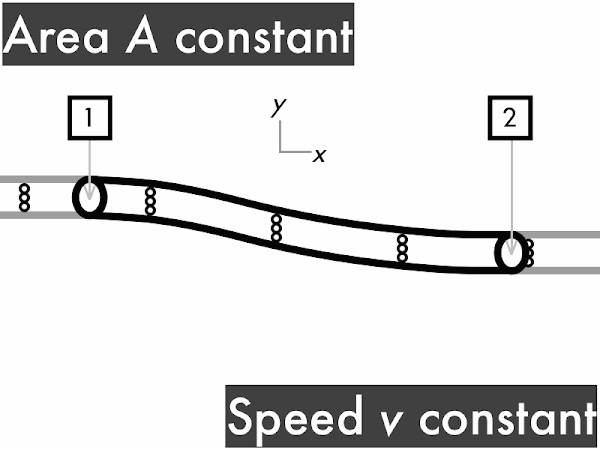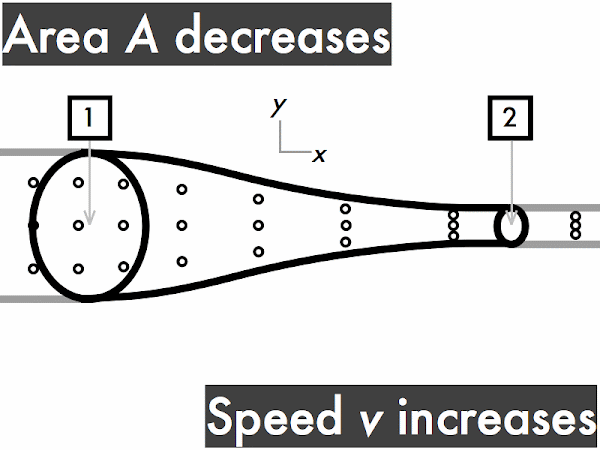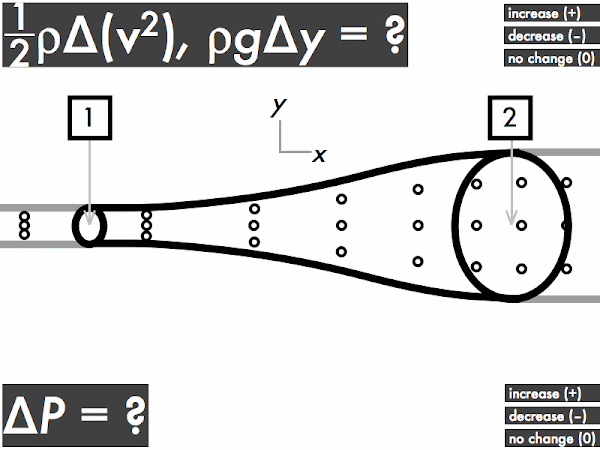Cuesta College, San Luis Obispo, CA
Students have a bi-weekly online reading assignment (hosted by SurveyMonkey.com), where they answer questions based on reading their textbook, material covered in previous lectures, opinion questions, and/or asking (anonymous) questions or making (anonymous) comments. Full credit is given for completing the online reading assignment before next week's lecture, regardless if whether their answers are correct/incorrect. Selected results/questions/comments are addressed by the instructor at the start of the following lecture.
The following questions were asked on reading textbook chapters and previewing a presentation on ideal fluid flow.

Selected/edited responses are given below.
Describe what you understand from the assigned textbook reading or presentation preview. Your description (2-3 sentences) should specifically demonstrate your level of understanding.
"Ideal fluids are incompressible, undergo laminar flow, and is non-viscous. Also, the diameter of a pipe can affect the speed of the fluid passing through it (as the area increases, speed decreases and vice versa)."
"As a fluid flows through a pipe, what goes in, must come out. If the pipe is the same size at both ends the fluid will have a constant speed. If the pipe is wider at one end, the fluid will slow at the wider end."
"When a fluid is turbulent or viscous then work is being done by an outside source, and so energy density is not conserved. So in order to apply Bernoulli's equation, the fluid that is being evaluated has to be ideal (steady, non-viscous, incompressible) so the it can be set to zero and the changes in the energy density terms can be calculated in relation to each other."
"Volume flow rate will always stay the same, but the shape of the pipe affects the speed of fluid going in and out."
"Didn't read."
"This is pretty confusing for me I'm lost a little on the logic of how things work."
Describe what you found confusing from the assigned textbook reading or presentation preview. Your description (2-3 sentences) should specifically identify the concept(s) that you do not understand.
"I found it confusing that a pipe with a small area will have a greater pressure that that of a larger pipe with the same ideal fluid flowing through them."
"I was not able to understand Bernoulli's equation. I just do not know what I am looking for."
"I would like to see some problems utilizing Bernoulli's Equation worked out in class."
"I don't understand why the hose collapsed at the crimped end. The slide presentation says that the pressure at the narrow end decreases. But if it's going from a higher area to a lower area, the speed increases and so does the pressure increase at the narrow end?"
"Didn't read."
"Just the logic behind it all really."
"Everything."
"It would be nice to cover detailed examples of each of the topics."
What is the SI (Système International) unit for volume flow rate?
"m3/s."
"Cubic meters per second."
"Didn't read."
"kg/s."

decreases. * [1] remains constant. ********************************************************* [57] increases. ** [2] (Unsure/lost/guessing/help!) *** [3]

decreases. ***************************************** [41] remains constant. ********* [9] increases. ********** [10] (Unsure/lost/guessing/help!) *** [3]

decreases. ********* [9] remains constant. ********* [9] increases. ****************************************** [42] (Unsure/lost/guessing/help!) *** [3]

(Only correct responses shown.)
(1/2)·ρ·∆(v2): decreases [48%]
ρ·g·∆y: no change [41%]
∆P: increases [27%]

(Only correct responses shown.)
(1/2)·ρ·∆(v2): increases [46%]
ρ·g·∆y: no change [33%]
∆P: decreases [29%]

(Only correct responses shown.)
(1/2)·ρ·∆(v2): no change [73%]
ρ·g·∆y: decreases [22%]
∆P: increases [65%]
Ask the instructor an anonymous question, or make a comment. Selected questions/comments may be discussed in class.
"The presentation preview was pretty straightforward. I just need examples in class."
"I'm sorry, but I really don't understand Bernoulli's equation."
"November 1 is National Hangover Day (unless you had lots of architecture homework)." (Remember, that which doesn't kill you, makes you stronger. Except architecture homework. Architecture homework will kill you.)
"What do you mean by 'physics doesn't suck, it blows?'"
"Where are we going with these fluid dynamics? Just curious."
"So dynamic fluids are used to understand nebulae in interstellar space, fission weapon detonation, and traffic engineering. A bit of a buffet going on here."
"Go through what the variables stand for, please."
"I understand I hate the book, and hit it with a bat." (Roll a d20 for your attack. #iwondungeonsanddragonsanditwasadvanced)
No comments:
Post a Comment